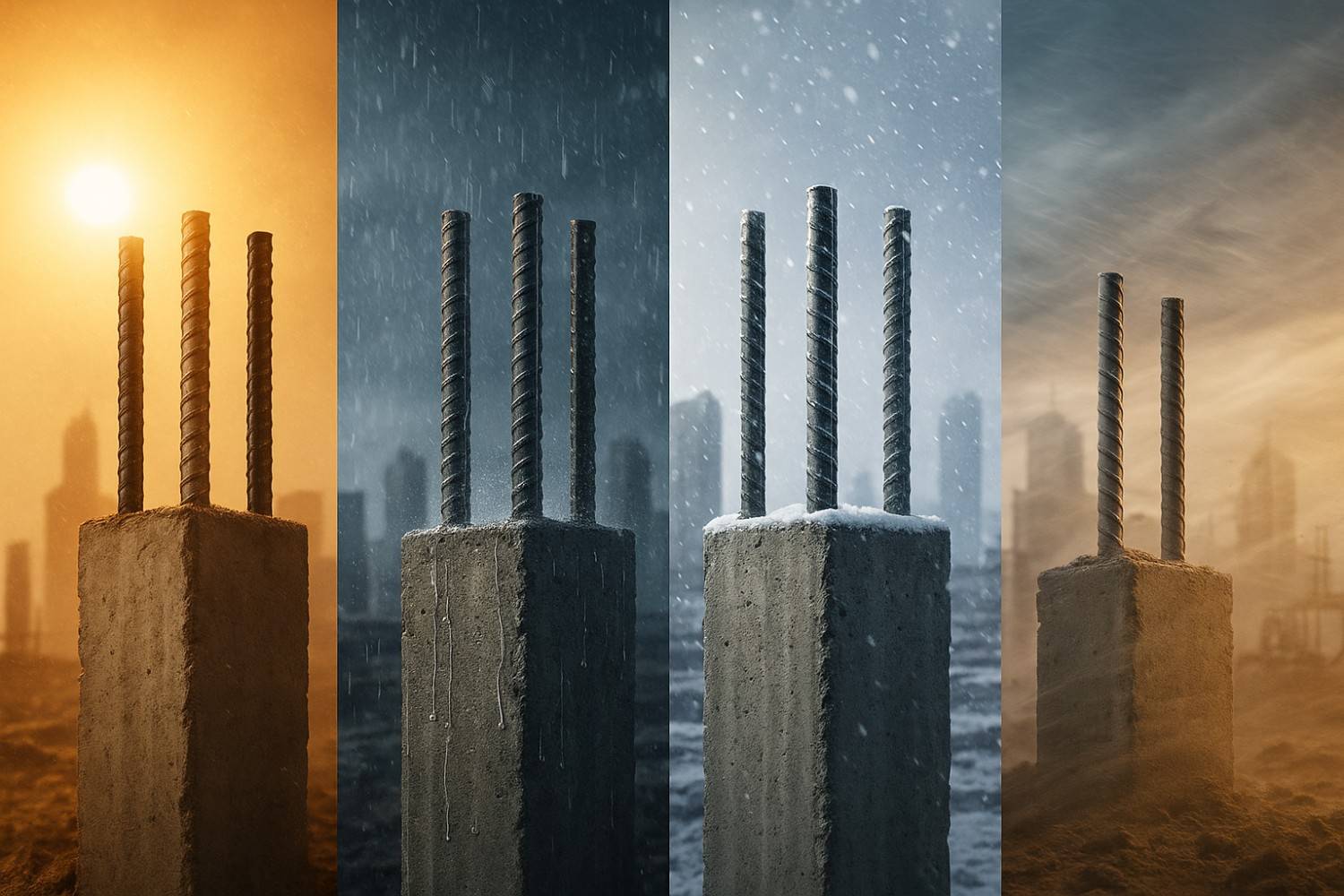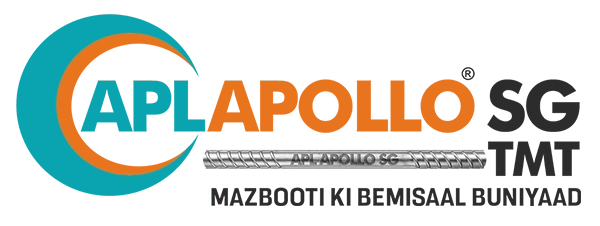
When you think about TMT bars, you might imagine their role in holding up the weight of a building. But their performance in extreme weather conditions can mean the difference between a structure that lasts for decades and one that shows cracks within years. Whether you’re building in the humid coastlines of India, the scorching plains, or the chilly hill stations, the right TMT bar ensures structural safety year-round.
- Why Extreme Weather Matters in Construction
Weather isn’t just an environmental factor – it’s an engineering challenge.
- Coastal areas face salt-laden winds that speed up corrosion.
- Hot and dry regions cause metal expansion and contraction.
- Cold climates test a bar’s ductility against brittleness.
- Monsoon-heavy zones require resistance to long-term water exposure.
If a TMT bar can’t handle these conditions, the entire RCC framework is at risk.
- How APL Apollo SG TMT Bars Stand Up to the Challenge
APL Apollo SG manufactures Fe 500 and Fe 550 grades, along with APL Apollo SG Infra Fe 500D and Fe 550D, designed with Thermex technology for consistent strength and exceptional corrosion resistance.
These bars are earthquake-resistant, rust-resistant, and highly ductile – essential qualities for projects in challenging weather zones.
- Real-Life Example – Coastal Construction in Visakhapatnam
In 2024, a mid-rise residential project near Visakhapatnam’s beachfront faced the challenge of high salt content in the air. Using APL Apollo SG Infra Fe 500D bars, the project’s RCC columns were reinforced with anti-rust binding wire for maximum protection. Engineers noted no visible signs of corrosion even after two consecutive monsoons.
- Hot Climate Performance – Industrial Warehouses in Rajasthan
For an industrial warehouse in Jaipur, Fe 550 TMT bars were chosen for their high tensile strength and ability to withstand temperature-induced expansion/contraction. Combined with solid weld joints on site using APL Apollo SG Welding Rods, the frame remains structurally stable even during peak summer months.
- Cold Weather Construction – Hill Town Project in Himachal Pradesh
In hilly Shimla, ductility is critical to prevent brittle failure in cold conditions. APL Apollo SG’s Fe 500D bars provided the necessary flexibility, ensuring the RCC framework retained integrity despite sub-zero winters.
- The Role of Accessories – Binding Wire & Fasteners in Weather Resistance
Even the best TMT bars rely on proper cage formation and secure joints to survive extreme weather.
- MS Binding Wire: See our post on Binding Wire Ensures Proper Cage Formation for why this step is non-negotiable.
- Fasteners: Quality nuts, bolts, and anchors ensure stability in steel frame sections, especially in high-wind areas.
- Mistakes to Avoid in Extreme Weather Construction
If you want your structure to last, avoid these pitfalls:
- Using non-certified bars in coastal zones.
- Ignoring ductility requirements in cold regions.
- Skipping proper welding and binding in high-moisture climates.
For more on avoiding costly errors, check out Common Mistakes to Avoid When Purchasing TMT Bars.
- Final Word – Build for the Weather, Not Just the Design
Choosing a TMT bar isn’t just about grades and price – it’s about matching the bar’s properties to your local climate challenges. Whether it’s Fe 500, Fe 550, Fe 500D, or Fe 550D, the right choice means safety, durability, and peace of mind.
📌 You Might Also Like



